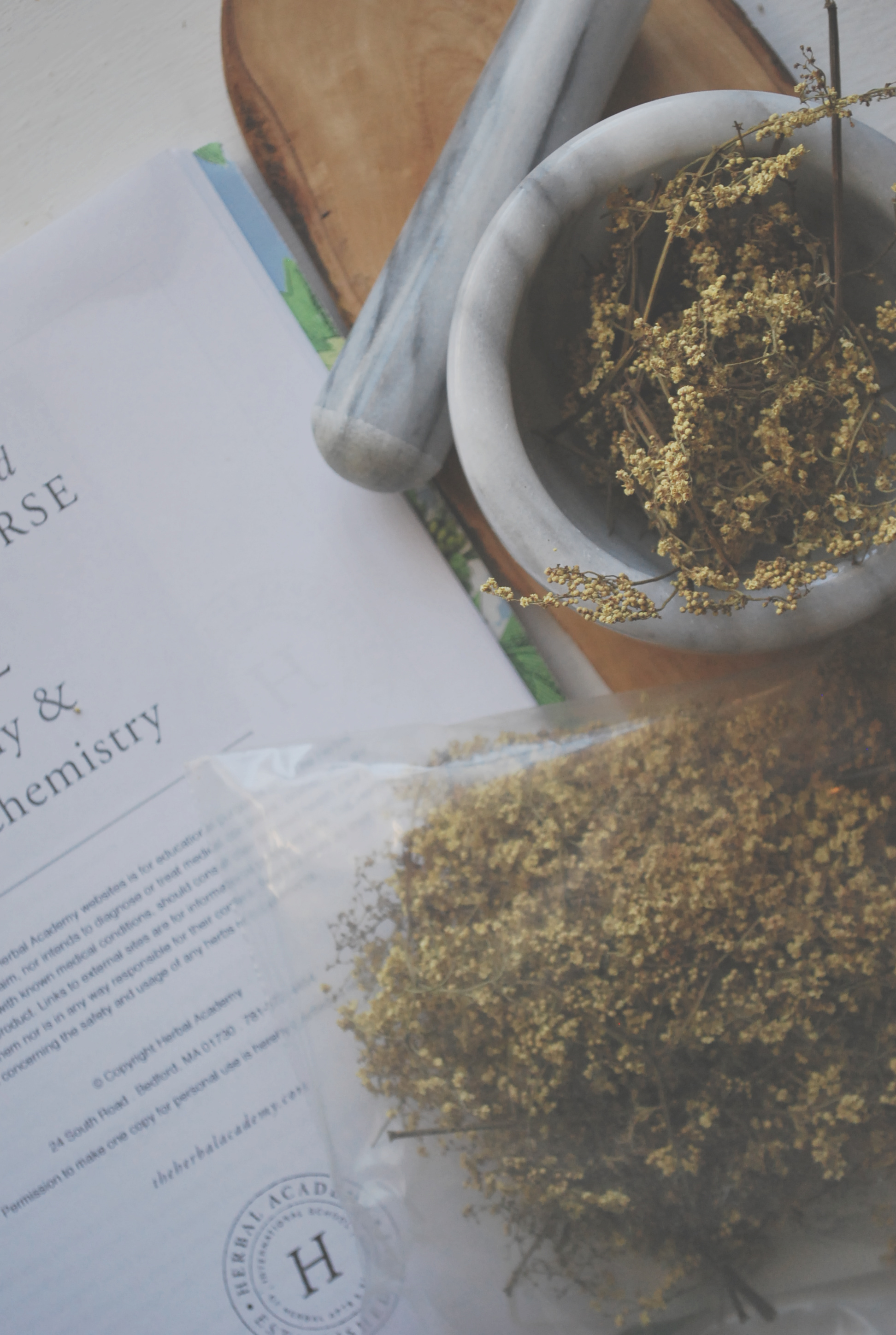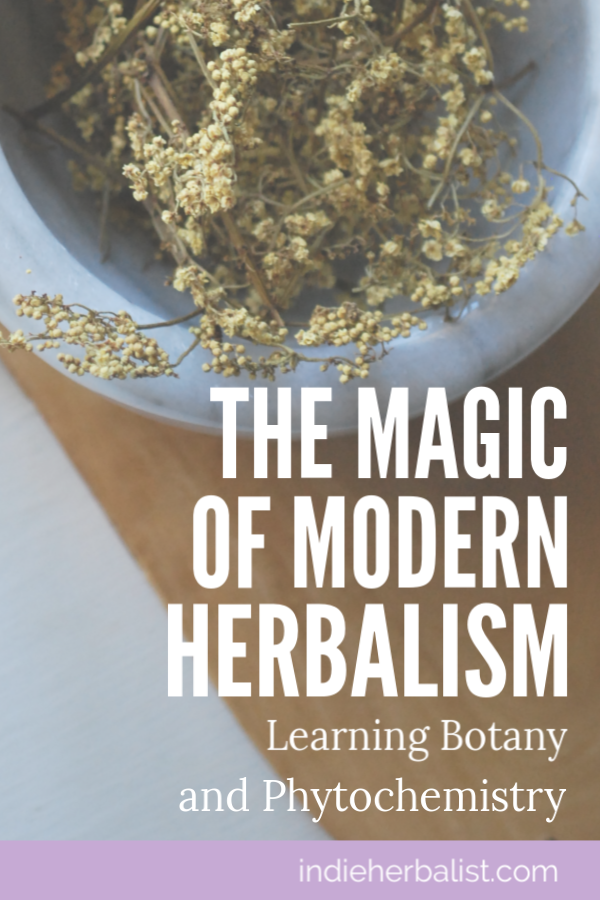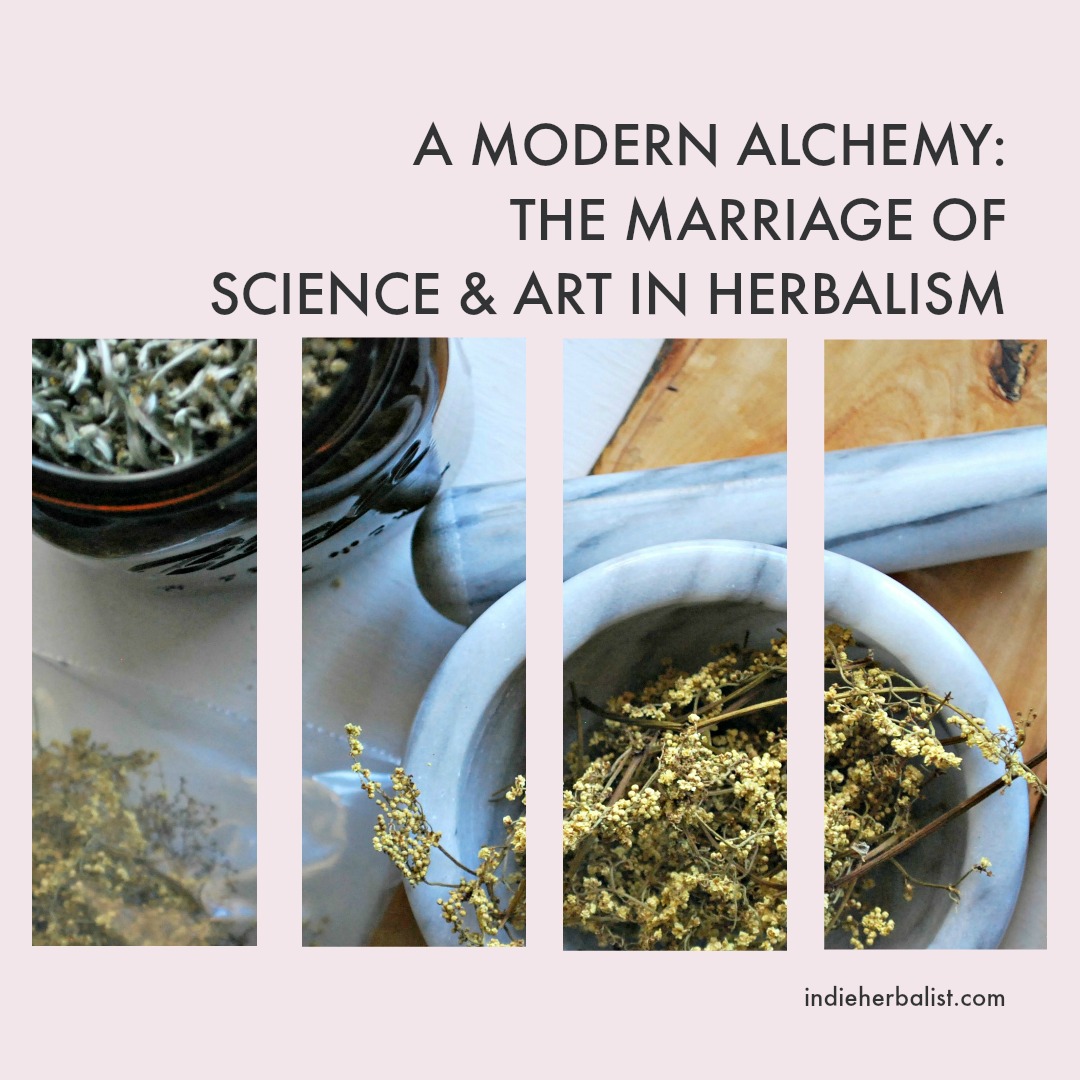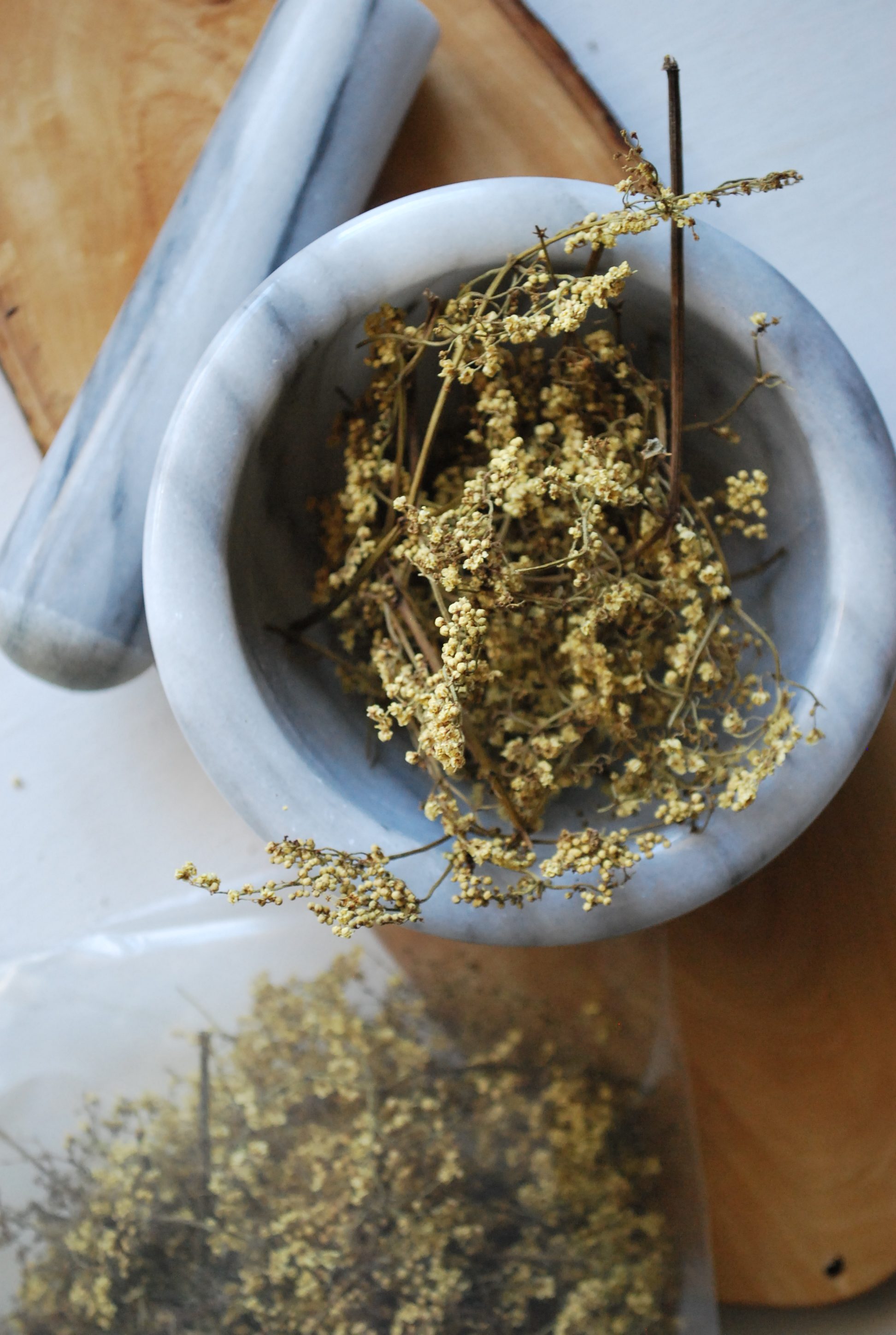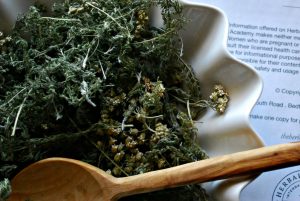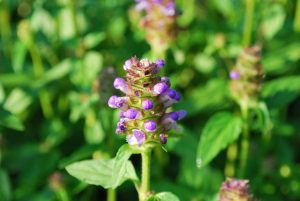Links contained in this post and elsewhere on my website may include affiliate links. When you make a purchase through these links, I earn a commission at no additional cost to you. I only link to products and services that I love - and that I think you will love, too!
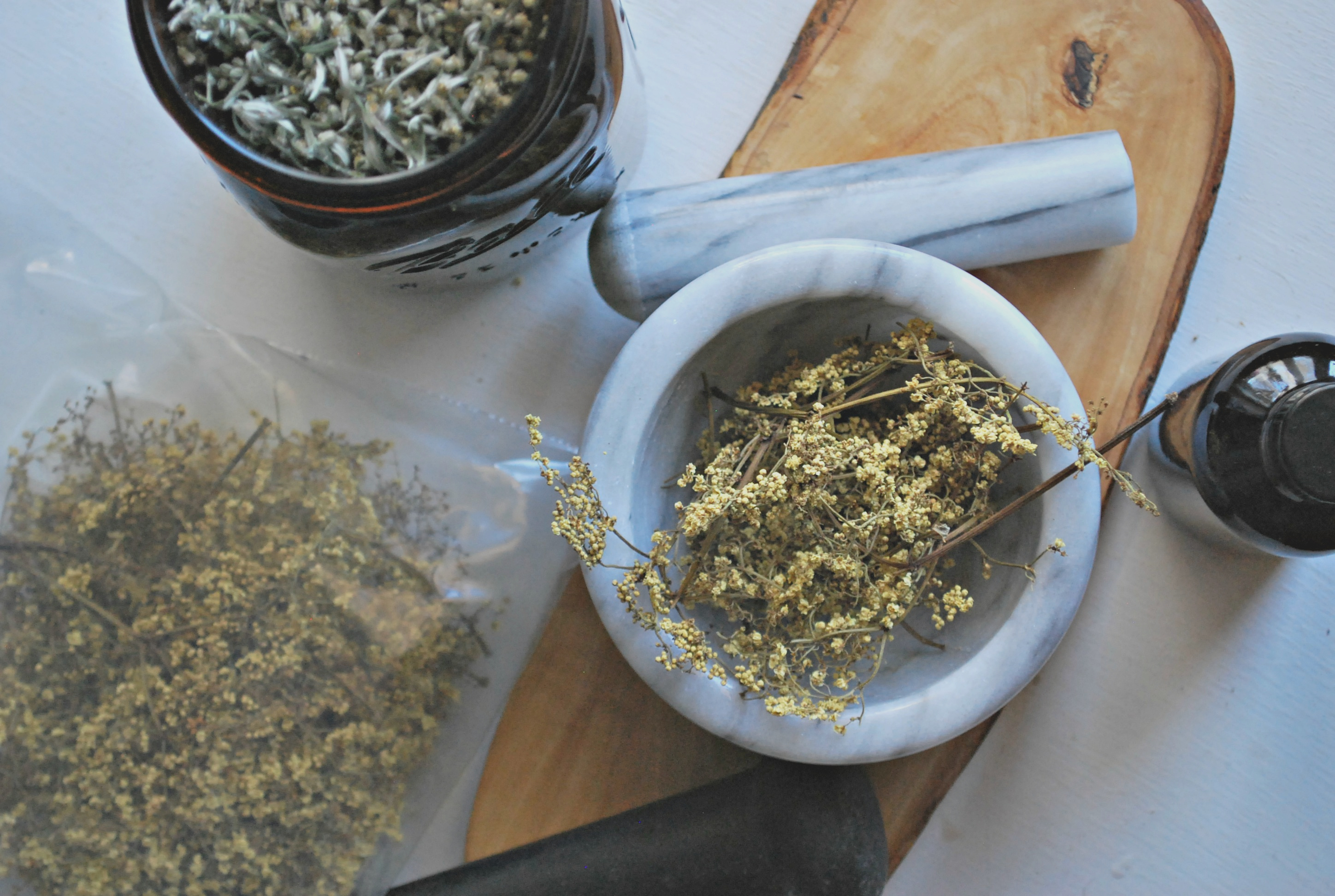
Let’s talk about the magic of modern herbalism. Not Harry Potter magic, necessarily. Rather, a certain magic that exists where art and science overlap. The Magic of Botany and Phytochemistry, if you will.
The magic of botany and phytochemistry, you ask? Yes, I can imagine the scientifically inclined among us are bridling at the idea I would dare to include magic and science in the same sentence. The magic of botany and phytochemistry? I can hear the artists and mystics in our ranks groaning in derision.
The Magic of Botany and Phytochemistry
Let me explain why I think that those words go together. You see, phytochemistry and botany are timely, important topics for modern herbalists. BUT. I’m not going to tell you that you need to be scientific to be an herbalist. At least, not in the desiccated, miserable, rote way. You know, the way that it’s fashionable for the artistically inclined to use as an excuse for avoiding the science of herbalism at all costs.
I’m also not going to tell you that it’s necessary to be spiritual in your herbalism. At least, not in the New Age, intuitively inspired, soul-on-fire way that is fashionable for scientists to use as a reason to deride the art within herbalism.
But there is both science and art in modern herbalism. And being able to see both is a beautiful thing. Let’s call it a modern alchemy, shall we? A middle way that marries the two. A path that ignites our curiosity and wonder and gives us the skills to observe and integrate what we learn.
Botany as the Study of Form and Wonder
Botany, of course, can be explored in a scientific context. It is the language of describing plants and placing them in relationship to one another. How are they similar? How have they become separate? What and where are their origins and how does this information explain our world (and theirs) in a little more detail? If nothing else, the study of botany is the study of form and function. But it’s also the study of wonder.
Is it possible to be an herbalist without knowing botany, or at the very least know how to identify a few herbs by sight? Yes, of course! There are many reputable herb companies that provide teas, extracts, and bulk herbs. You don’t technically need to be able to identify the herbs you want use. After all, not everyone has room for gardening or acres of land for wildcrafting (or even a desire to do so). You can be an advanced herbalist working in a clinical setting without ever coming face to face with the herbs you use.
The Vital Connection
But is that wise? That’s where I will tell you the answer is no. There’s a vital connection to the natural world within herbalism, and I think we ignore that to our own detriment as a society. It may seem old fashioned or quaint to modern sensibilities at first glance. After all, our darling is science! Nothing so messy as dirt and pollen and seeds, if you please. Nothing so esoteric as mystery and divinity.
However, knowing intimately how a tiny seed in the mud becomes chaos in the soil and then transmutes into fragrant leaves and petals can be an epiphany. As we study botany by observing herbs in their natural settings, we develop a deeper appreciation for connection. Suddenly, we grasp that herbs are not just ingredients, not simply a commodity to be bought and sold. They are beings alongside of us within all of existence. We glimpse that path of herbalist-as-mystic with more cunning now – it’s all form and wonder. By working alongside our herbs and learning them by sight and by name, we cultivate reverence, gratitude, and patience. Interestingly, these are qualities that make our interactions with other humans much more fulfilling.
Phytochemistry as Modern Alchemy
Equally, you can confidently use herbs day-to-day without knowing phytochemistry. Our ancestors did quite well with their folk-herbalism systems and these systems are equally applicable in a modern setting. They used organoleptic properties to describe and code the qualities of plants that they could see, taste, and smell. It gave them the ability to translate those properties into a cohesive system for using herbs.
Sweet, bitter, salty, sour, pungent – each taste points to a compatibility with a state of being in the human body, each taste offers the potential for effecting changes within physiology. Something as simple as trusting our senses thousands of years ago laid the foundation for illuminating the individual recipe – the chemical constituents- for every herb that we have ever known and ever will.
The Language of Potions
In that sense, phytochemistry in modern herbalism is also the study of what makes herbs our allies. Bitterness tells us that alkaloids are present. Sweetness comes from polysaccharides. Minerals taste of earth and salt. And what of those heavenly fragrances? Volatile oils that simmer out in steam and escape our teacups, unless we place the saucer over top.
The language of phytochemistry helps us understand the microcosm of our potions, unguents, and oxymels. It helps us describe and catalogue the actions and use of each herb. By knowing a little phytochemistry, we better understand the transformative nature of herbs within the human body, the actions and interactions plants can have with our hearts, and minds, and souls.
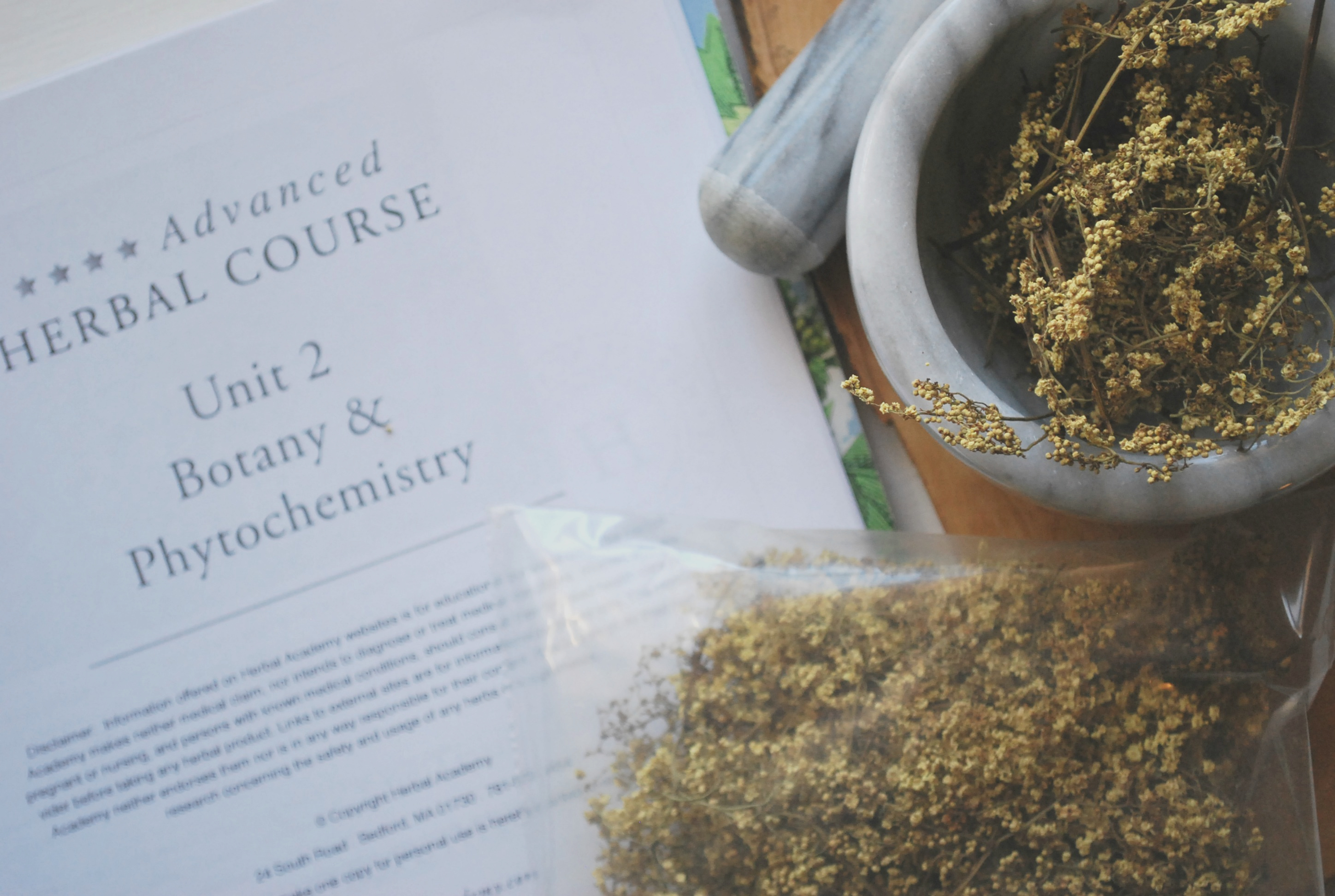
Botany and Phytochemistry for a Well-Rounded Herbal Education
Recently, I completed my studies with the Advanced Herbal Course with the Herbal Academy. If you are looking for a way to take the next step with your own herbal studies, I highly recommend it! You can read my overall course review here, and I’d love to share a little more about the part of the course that focuses on botany and phytochemistry below.
I’m an affiliate of the Herbal Academy, so I earn a commission when you enroll at no extra cost to you. I’ve been an associate educator and part of their writing team, so I would fully endorse them even if I wasn’t an affiliate- I love what they do and what they stand for! Here are my thoughts and experiences as a student with Unit 2 of the Advanced Herbal Course.
Let’s Take a Look!
As many of you know if you read my blog, I’m a big fan of getting hands-on with plants. Accordingly, I adored this Unit. It makes me incredibly happy to see such a detailed illumination of the strictly botanical side of herbalism.
This is another hefty Unit with plenty to explore and investigate as you go along. This Unit features some gorgeous videos in a teaching garden that really help bring the Unit to life and whet your curiosity. After that, you will explore plant chemistry, herb-drug interactions, and how to evaluate herbal research. This Unit contains five lessons.
Lesson 1: Plant Identification and Taxonomy
It’s much easier to talk about plants when you know a little botany. This lesson does a fantastic job giving you information on the scientific names of plants. Scientific names are important because the two-part binomial is unique to an individual plant. Common names can be shared by more than one plant, which gets confusing. After that, you will jump into learning the lingo that botanists use to precisely describe a plant and learn about how plants are organized into groups with similar characteristics. It’s beautifully illustrated throughout.
Lesson 2: Plant Chemistry
Get ready to brush up on your chemistry and address the topic of plant constituents! I promise, it’s not as intimidating as it sounds. If you’ve ever wondered why and how medicinal herbs work, you will love this lesson. Once you’ve finished studying this lesson, you will understand the basic chemical components that give herbs the ability to support our health.
Lesson 3: Pharmacology of Medicinal Plants
The tone of this lesson is a little more dense and technical than previous lessons, but it’s still approachable and well-organized. The purpose here is to cover the concepts of pharmacology and pharmacognosy as they apply to modern herbalism. Armed with this lesson, you can build on the information from Lesson Two. You will also be better prepared to read and engage with scientific research on herbs you are studying.
Lesson 4: Herb-Drug Interactions
This is actually another one of my favorite lessons, because it takes a very difficult topic and explains it very well. If you are interested in a career as an herbalist, understanding the potential for herb-drug interactions is extremely important. Although much of the information on herb-drug interactions is theoretical, there is also evidence that interactions are very real and some can be quite severe. This lesson illustrates how herbs can influence human metabolism (for example, the way we process medicines and herbs through our liver) and the different processes that herb-drug interactions can interrupt.
Lesson 5: How to Evaluate Research
Have you ever tried to read a clinical study or scientific paper about herbs and felt a little (or even completely) lost and frustrated? Don’t worry, because you’re not alone. It can be really difficult to figure things out, especially if your background in herbalism is more on the “folk” end of the spectrum. But there is absolutely no reason to be intimidated, and every reason to learn how to evaluate research! It’s an incredibly useful skill and one that will serve you well as you begin to explore the full scope of an herb- from ethnobotanical uses straight through to modern research. This lesson will point you in the right direction.
Exploring the Science and Art of Herbalism
This Unit is all about the science behind modern herbalism. It approaches it in a way that is highly detailed yet also relatable and easy to digest. You’ll finish this Unit with more confidence in your ability to study herbs with botany, phytochemistry, pharmacology, and scientific research.
Ready to immerse yourself in the science of herbalism? Learn more about the Advanced Herbal Course (#affiliate link) and discover how to enroll at the Herbal Academy website!
About Me
I’m an herbalist and author from Atlanta, Georgia. Thanks for visiting my blog! My popular herbal recipe book is full of creative ideas for supporting wellness with adaptogens like rhodiola, holy basil, and ashwagandha. You can learn more about my book here. It’s available for purchase through Amazon, Barnes and Noble, or by request at your favorite local book shop! I am a graduate of the Herbal Academy’s Advanced Herbal Course (#affiliate link).
Follow along on Pinterest, Facebook, and Instagram!

